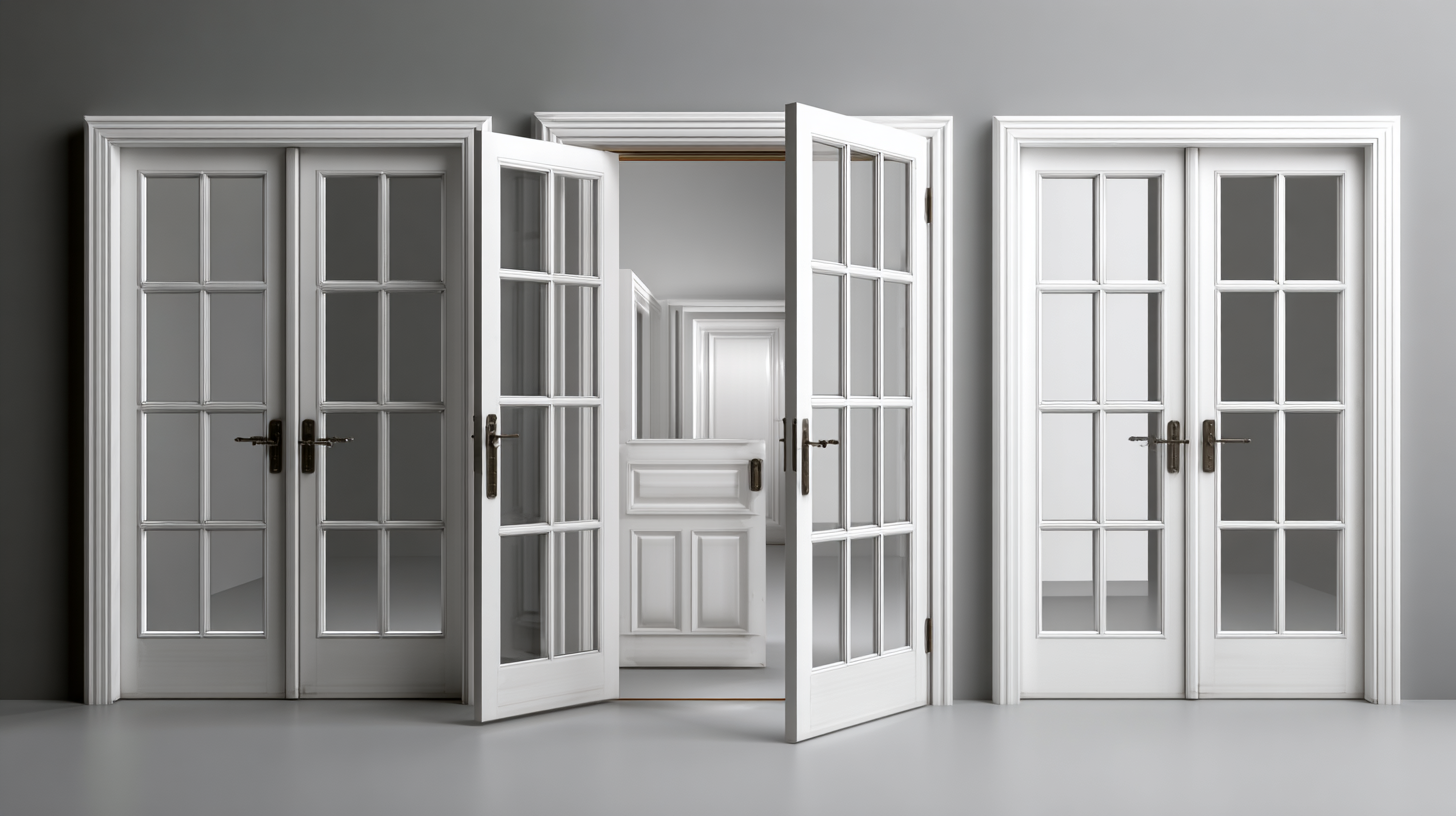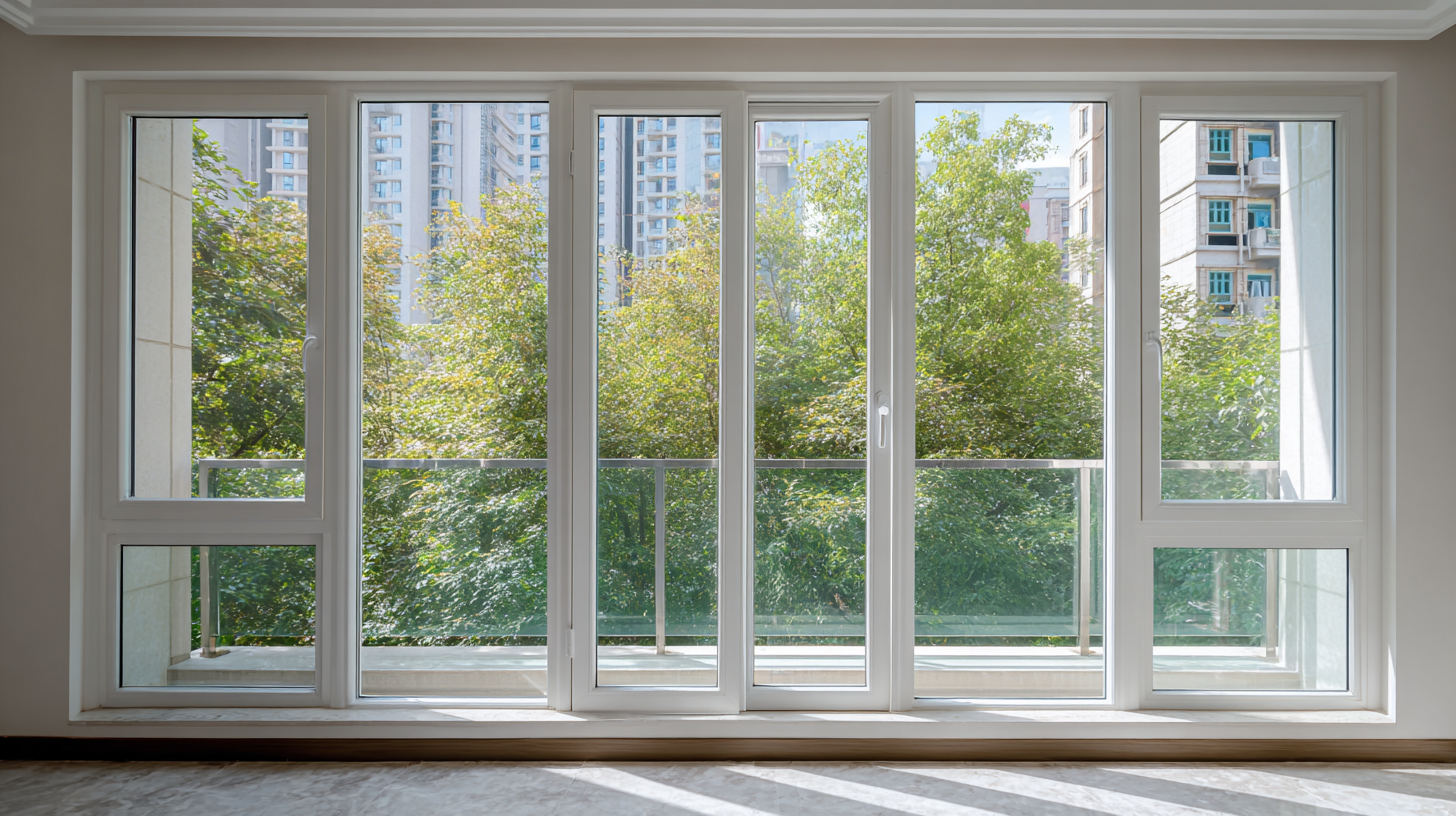5 Innovative Facts About Doors and Windows to Enhance Energy Efficiency by 30%!
The proper selection and installation of doors and windows can significantly impact a building's energy efficiency, with studies indicating that up to 30% of a home’s heating and cooling energy can be lost through these openings. According to the U.S. Department of Energy, energy-efficient doors and windows can not only help in reducing energy bills but also contribute to a smaller carbon footprint, making them an essential consideration for any homeowner or builder. In fact, replacing old windows with ENERGY STAR® certified models can result in energy savings of up to 15%.

Furthermore, advancements in technology have led to innovative materials and designs that enhance thermal performance, seal tight against air leaks, and improve overall energy conservation. As we explore five innovative facts about doors and windows that can elevate energy efficiency, it's clear that choosing the right solutions is crucial for sustainable living and comfort in modern architecture.
Table of Contents
[Hide]
Understanding Energy Efficiency in Doors and Windows: Key Principles
Energy efficiency in doors and windows is fundamentally about how these components can minimize heat loss and gain, ultimately reducing energy consumption within a building. Key principles include insulation, air sealing, and the choice of materials. High-quality insulation in doors and windows can significantly reduce thermal bridging, ensuring that the indoor temperatures remain stable regardless of the weather outside. This can be achieved through double or triple glazing and using energy-efficient frames made from materials like fiberglass, which have lower thermal conductivity compared to traditional options.
Another vital factor is air sealing, which prevents drafts that can lead to energy inefficiency. Proper installation and the use of weather stripping or caulking can dramatically enhance the airtightness of doors and windows. When air leaks are minimized, buildings require less energy for heating in winter and cooling in summer, contributing to overall energy savings. By understanding and applying these principles, homeowners can achieve a substantial improvement in their energy efficiency, potentially enhancing it by as much as 30%.
Advanced Insulation Materials: A Game Changer for Window Performance
Advanced insulation materials have revolutionized the performance of windows, contributing to significant energy efficiency improvements. Traditional window technologies often allow heat to escape during winter and overheat interiors during summer. However, innovative materials like low-emissivity (Low-E) glass and gas-filled frames act as barriers, reducing thermal transfer and maintaining optimal indoor temperatures. By utilizing these modern materials, homeowners can not only enhance comfort but also reduce energy bills substantially.
Tip: When selecting new windows, look for those with multiple glazing layers and an Energy Star rating to ensure high performance and energy savings.
Incorporating advanced insulation into window designs is also about more than just the materials; the installation process is crucial. Proper sealing and insulation in frames can prevent air leaks that undermine the efficiency of even the most advanced windows. Techniques such as foam insulation and weatherstripping can further enhance the overall performance.
Tip: Always hire a professional installer familiar with energy efficiency standards to ensure that your windows are not only aesthetically pleasing but also perform effectively.
5 Innovative Facts About Doors and Windows to Enhance Energy Efficiency by 30%!
| Feature | Description | Energy Efficiency Improvement (%) | Material |
|---|---|---|---|
| Low-E Coating | Reflects heat while allowing light to pass through | 15% | Glass |
| Insulated Frames | Reduces heat transfer and improves structural integrity | 10% | Vinyl, Fiberglass |
| Triple Glazing | Three panes of glass provide superior insulation | 20% | Glass |
| Advanced Weather Stripping | Seals gaps to prevent air leaks | 5% | Various Materials |
| Smart Windows | Adjust tint based on sunlight exposure | 10% | Glass, Electronics |
Smart Technologies: How Automation Can Optimize Energy Use
In the quest for energy efficiency, smart technologies are revolutionizing the way we manage our homes. According to a report by the American Council for an Energy-Efficient Economy (ACEEE), implementing automation in homes can lead to energy savings of up to 30%. Smart windows and doors equipped with sensors can regulate natural light, adjust temperatures, and monitor occupancy, ensuring that energy is used only when necessary. These advancements not only enhance comfort but also significantly reduce reliance on heating and cooling systems.

Additionally, the International Energy Agency (IEA) highlights that integrating smart technologies into building management systems can optimize energy consumption patterns and reduce overall energy demand. For instance, automated shading devices can lower indoor temperatures during peak sunlight hours, decreasing the energy spent on air conditioning. Moreover, smart thermostats learn user patterns, providing tailored climate control that can cut energy bills by as much as 10-15%. Embracing these innovations in windows and doors is not just a step toward sustainability; it's a smart investment for modern energy-conscious homeowners.
Design Innovations: Eco-Friendly Styles That Reduce Heat Loss
 In today's eco-conscious world, the design of doors and windows plays a crucial role in enhancing energy efficiency. Innovative styles are not just aesthetically pleasing but are also engineered to minimize heat loss. One such advancement is the use of triple-glazed windows, which provide superior insulation compared to traditional dual-pane options. These windows employ multiple layers of glass separated by air or gas-filled spaces, significantly reducing thermal transfer and keeping indoor environments comfortable year-round.
In today's eco-conscious world, the design of doors and windows plays a crucial role in enhancing energy efficiency. Innovative styles are not just aesthetically pleasing but are also engineered to minimize heat loss. One such advancement is the use of triple-glazed windows, which provide superior insulation compared to traditional dual-pane options. These windows employ multiple layers of glass separated by air or gas-filled spaces, significantly reducing thermal transfer and keeping indoor environments comfortable year-round.
Another noteworthy trend is the integration of advanced framing materials such as fiberglass and composite frames. Unlike conventional wood or aluminum, these materials are less conductive and effectively reduce heat transfer. Additionally, modern designs often incorporate larger openings with strategically placed overhangs, allowing for maximum natural light while controlling solar heat gain during warmer months. By focusing on these eco-friendly styles, homeowners can not only enhance their living spaces but also contribute to a significant reduction in energy consumption, aligning with sustainable practices and reducing overall environmental impact.
Sealing Strategies: Effective Techniques to Eliminate Drafts and Improve Efficiency
Effective sealing strategies are essential for enhancing the energy efficiency of your home, especially when addressing drafts around doors and windows. According to the U.S. Department of Energy, as much as 25% to 30% of heating and cooling energy use can be attributed to air leaks in homes. By implementing effective sealing techniques, homeowners can significantly reduce energy costs and improve comfort during extreme weather conditions.
One crucial tip is to regularly inspect weather stripping and caulking around windows and doors. Over time, these materials can degrade, allowing drafts to enter. Replace worn or damaged seals with high-quality, energy-efficient options, such as silicone caulk or foam weather stripping, which can provide much better insulation than older materials. Additionally, using door sweeps can effectively block gaps at the bottom of doors, preventing cold air infiltration.
Another great strategy is to use thermal curtains or shades. According to the Lawrence Berkeley National Laboratory, properly installed window treatments can reduce energy loss by up to 20%. During the winter months, close these treatments in the evening to trap heat indoors, and open them during the day to take advantage of natural sunlight. Utilizing such techniques can lead to a noticeable reduction in energy usage, creating a more environmentally friendly home while saving money.
Energy Efficiency Improvements Through Sealing Strategies
Related Posts
-

Innovative House Door Designs That Transform Your Home and Boost Energy Efficiency
-

The Ultimate Guide to Choosing the Perfect Home Doors for Every Style and Budget
-

7 Essential Tips for Choosing the Perfect Home Doors: Transform Your Space with Industry Insights!
-

5 Essential Tips for Choosing the Perfect French Windows for Your Home
-

Innovative Designs for Doors and Windows That Transform Spaces Globally
-

Exploring Unique Entry Doors: Innovative Examples to Enhance Your Home's Curb Appeal